In a recent article by The Athletic, statistics suggested that Real Madrid were the best defensive side in Europe’s top
five leagues from set-pieces. Over the past five seasons, they conceded 21 goals, averaging just over four goals per season.
Obviously, the better a team is, like Madrid, who have won a UEFA Champions League during this time frame, the more likely they are to dominate games and have to defend fewer set-pieces, being less likely to concede a goal.
In Belgium, R.S.C. Anderlecht have recently appointed Brian Riemer at the end of 2022.
This is his first role as a manager in senior football, following four years
on Brentford’s backroom staff. The team is well known for itsfocus on set pieces.
The Dane has been in charge of the side for just over a season’s worth of games, during which they have only conceded three set-piece goals.
The increase in quality of set-play defending is evident, with Anderlecht conceding four set-piece goals in the four months before Riemer’s appointment.
During Riemer’s reign, Anderlecht allowed two short corners to end up in the back of the net in the early months of 2023, while this season, one free kick resulted in a goal.
This means that this season, so far, after around 120 corners faced, Anderlecht
has managed to successfully ward off every corner they have faced, allowing their opponents to win aerial duels on eight occasions. This meansthat on 93% of their defensive corners, the ball has been cleared by the Purple & Whites.
In this tactical analysis, we will look into Brian Riemer’s tactics behind R.S.C.
Anderlecht’s defensive set-pieces, with an in-depth analysis of the key details behind the fluid defensive roles of the zonal defenders.
This set-piece analysis will explain why Anderlecht
has only conceded three goals in 14 months, is on track to only allow 15 goals in five seasons, and isbecoming one of Europe’s strongest set-piece sides, at least from a defensive perspective.
Fluidity of Zonal & Man Markers
Under Brian Riemer’s style of play, every defensive corner kick setup from Anderlecht is nearly identical, with five zonal defenders scattered around the six-yard box, one player around the edge of the area, and the rest man-marking opposition attackers.
If the attacking side brings a player short, an additional player will step away from the box to close down the short option, leaving one player fewer amongst the man-markers.

The positioning of the zonal defending units is quite intriguing and has been deliberately set up by Riemer.
One defender is placed by the front post, and one is in a similar position relative to the goal but by the back post.
There are three more central zonal defenders, with the central one deeper than the teammate on either side.
Using five zonal defenders means that every area inside the six-yard box is adequately protected and leaves one player with the freedom of vacating their position to intercept the ball, with the safety of the knowledge that the other four defenders can cover the part of the six-yard box the ball is aimed towards.
Each role will be analysed further in depth in the article below.
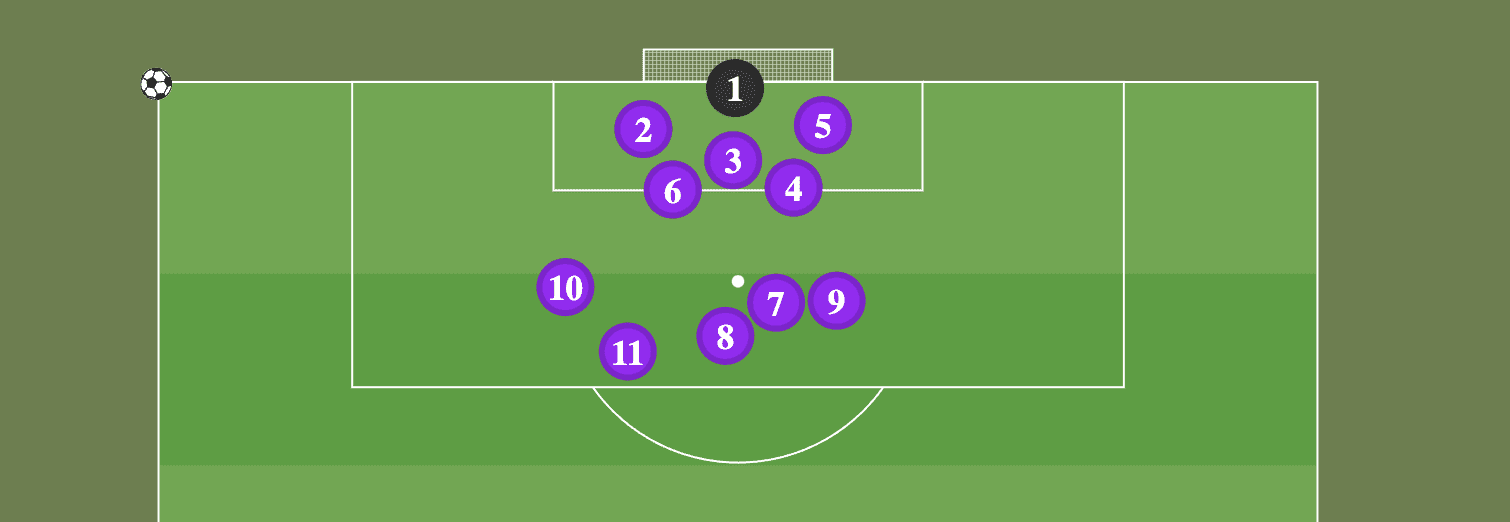
The player at the front post has one of the more critical roles in the side.
He must be able to judge where the ball will land early and intercept crosses as early as possible.
Many teams use near-post runs to break into the six-yard box at the earliest point.
With runs often coming from over his shoulder, this role requires a quick first step to prevent any players from arriving inside the six-yard box, with enough time and space to flick the ball goalwards.
As with many other players in the team, Riemer has requested aggressive pressure on the ball receiver to block potential efforts on goal as soon as they are made.
As the image below shows, although there are two players near the front edge of the six-yard box, the player at the front post is responsible for clearing any ball that enters the box.
His teammate is more focused on picking up any spare attackers arriving from deep to prevent them from getting to the ball.
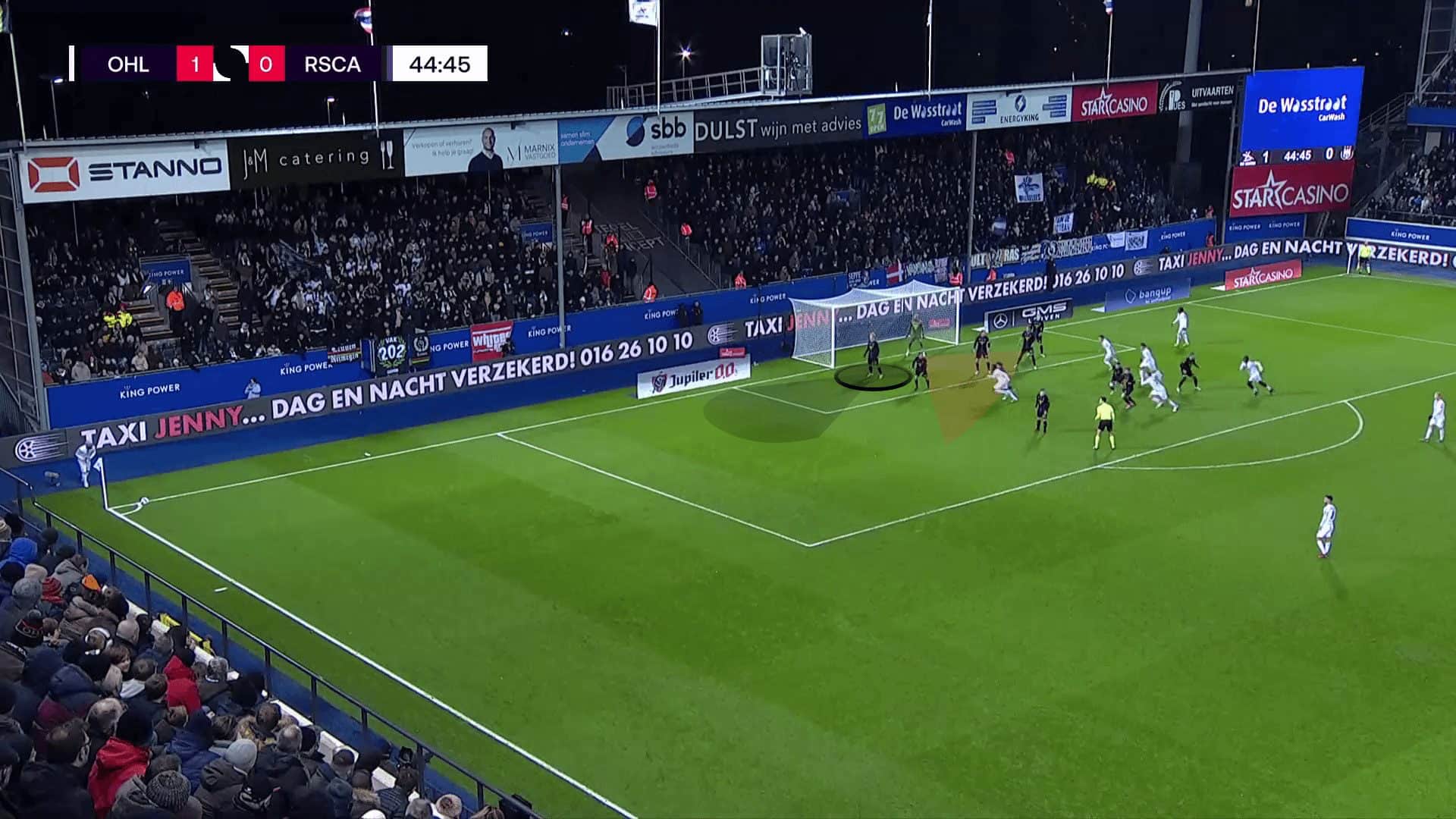
As mentioned above, this role requires excellent agility and reactions so that the defender can stay as close as possible to the attacker.
The defender must be able to keep up with any attacker who comes into their zone between the front post and the near side of the six-yard box.
The image shows the correct execution required, with the defender managing to be touch-tight to their marker even if they arrive from behind their back, with momentum on their side.
When the defender can stay so close, the attacker has a limited number of options as to how he can redirect the ball.
Simultaneously, the near post defender must also have the ability to distinguish between a decoy run and an actual run by leaving the run alone if it is clear that the ball is not intended for that area.
The priority is to defend the area around the front post, with the defender able to vacate once he is certain that the area is secure and under no threat.
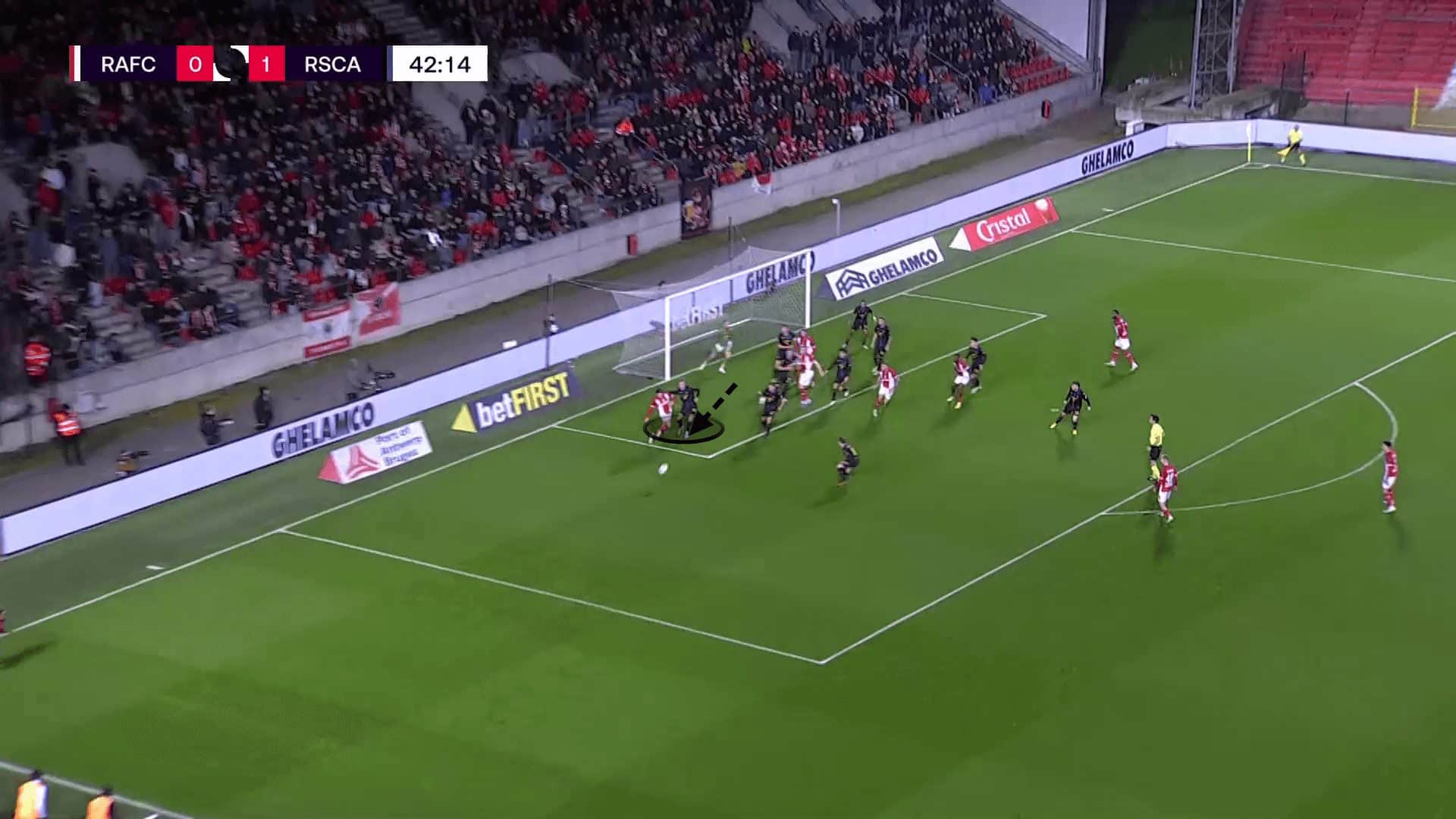
The next defender in the zonal unit, highlighted in white below, has different roles.
Of course, the priority is to attack the ball when it reaches his zone, with his responsibility being any ball arriving on the near part of the six-yard line or just outside of it.
The role differentiates from the prior near-post defender and sets Anderlecht apart from many other sides across Europe.
Many sides often use fewer zonal defenders and increase the number of man-markers used.
This is a slightly more cautious approach used by Anderlecht, where the defender doesn’t man-mark off the start, where he could potentially lose his marker in a deeper area, allowing him to arrive freely in the six-yard box.
Instead, he waits in the area pictured below, and if an attacker manages to break in towards his zone, this defender jumps out of his spot to disrupt the attacker’s run before they can arrive in the six-yard box.
This role prevents opponents from gaining access to high-value chance-creating areas that almost every team attempts to enter.
Anderlecht are happy to use one fewer man-marker, even if it means leaving an attacker free around the penalty spot, as they put the most emphasis on stopping headers from a close range at all costs.
If that attacker was to arrive inside the six-yard box, one of the many zonal defenders would be prepared to disrupt the movement and prevent them from getting a free run on goal.
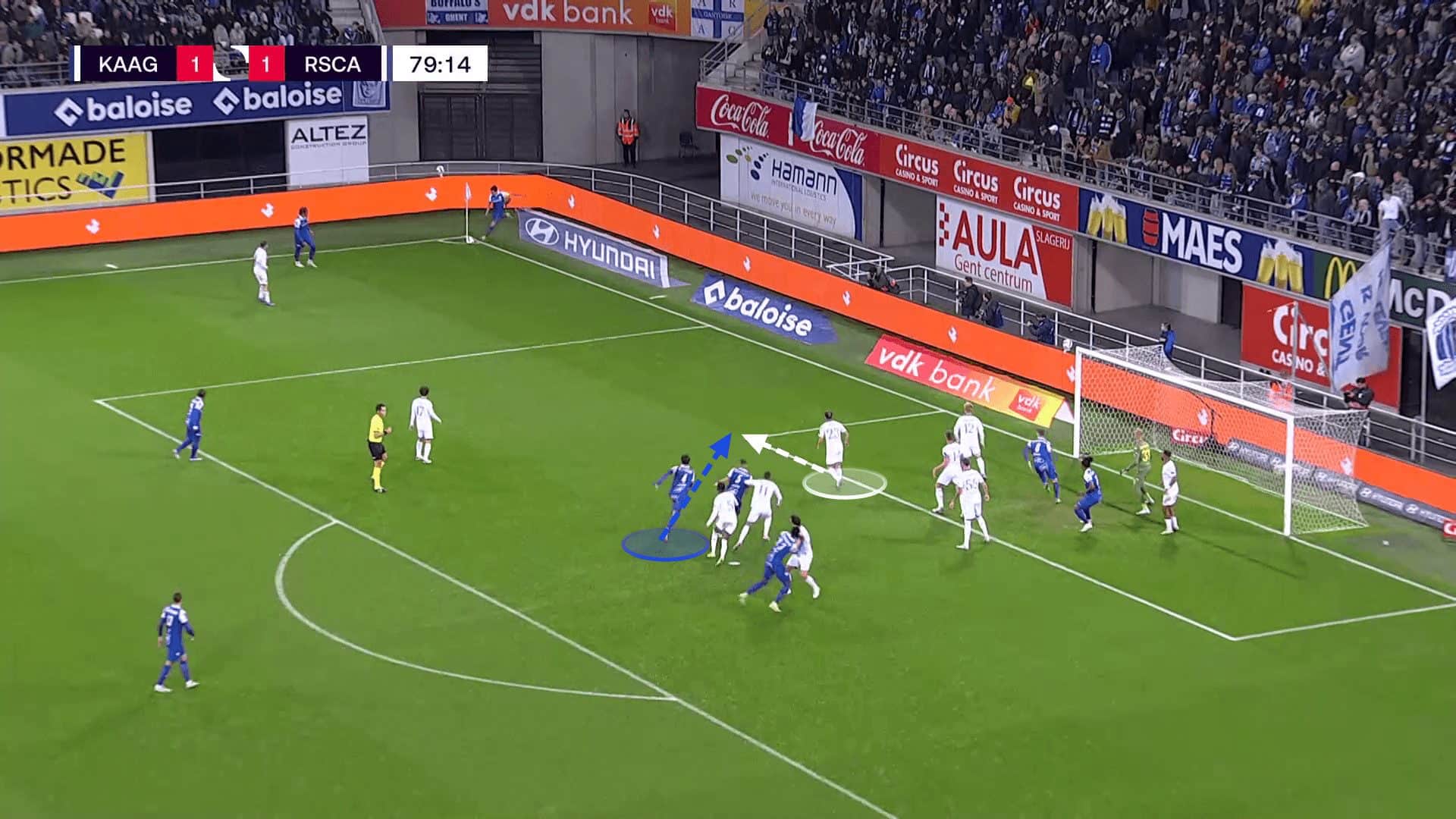
The next position is at the centre of the zonal unit, where captain and ex-Spurs defender Jan Vertonghen is given the responsibility of clearing any dangerous cross.
Once the zonal defender in front picks up a free attacker, Vertonghen, highlighted in black, has the decision of when and where to fill in the gaps.
Sometimes, this means covering space at the front post or sometimes nearer the penalty area, but the defender must be able to judge and time his arrival to the ball perfectly.
With that player in front sometimes leaving his position, Vertonghen must be able to step forward to close down the space, leaving him in the area that most teams look to find when attacking corner kicks.
This player starts slightly deeper than his teammates next to him, which allows him to attack the ball rather than waiting for it.
Even if the ball is heading towards the six-yard line, Vertonghen gets the chance to arrive at it rather than waiting for it.
This means that he can generate momentum in the aerial duels to counter that which attackers might generate if they can pass their markers and sprint towards the ball.
Vertonghen is deep enough that any ball coming at him should be close enough for goalkeeper Schmeichel to claim, meaning Vertonghen has to frequently make runs away from his goal to give himself the advantage in those aerial duels.
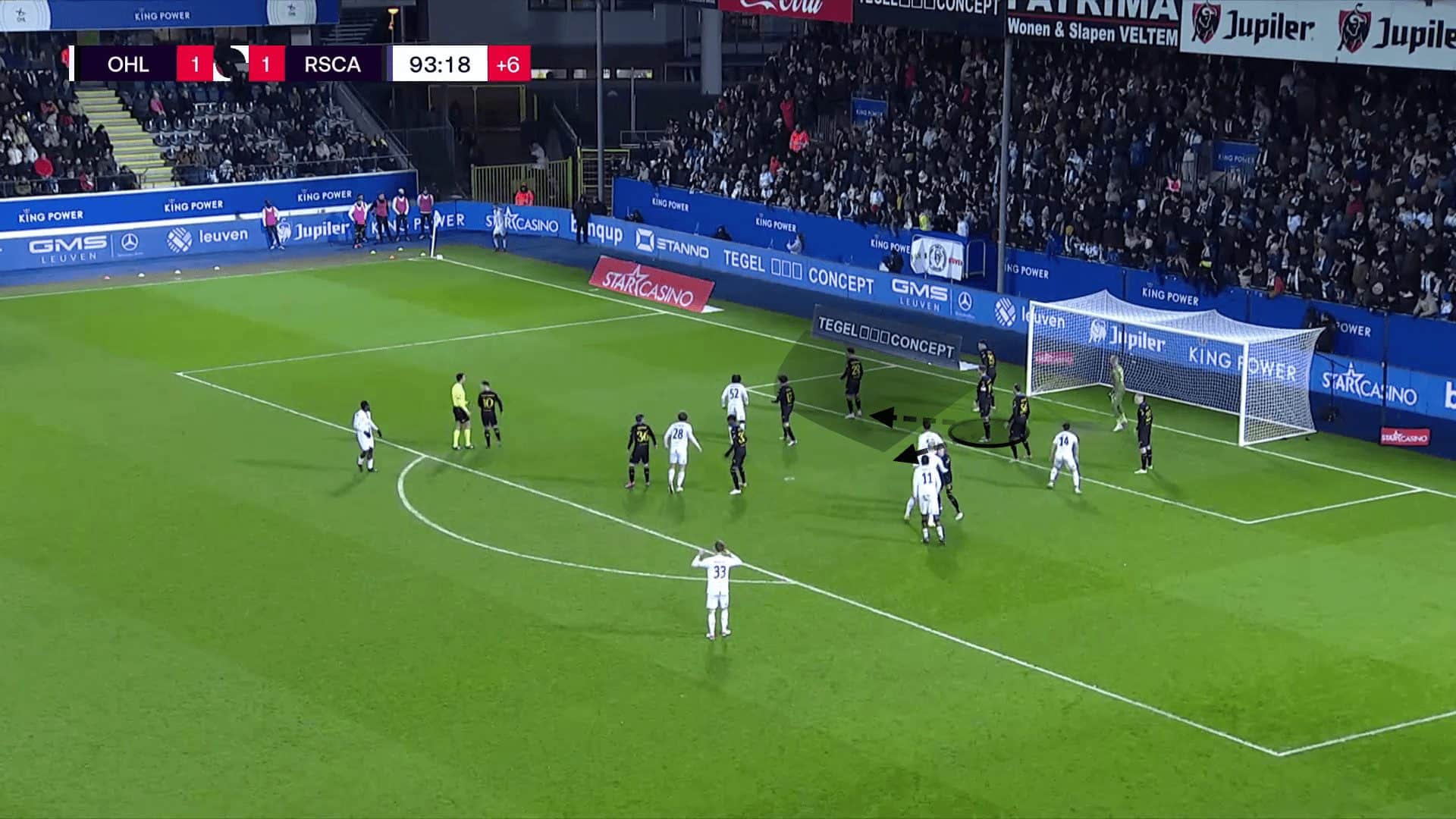
In the deeper man marking unit, Riemer emphasises making sure each player marks their opponent tightly to ensure that they cannot arrive at the six-yard box with any sort of momentum generated.
If a defender can get close enough before their attackers start their movement, it can be difficult to shake that defender off and attack the cross.
Something that I would like to see attempted more often against Anderlecht is the use of screens or arrivals from deep where they overload the number of zonal defenders Anderlecht have, at least in one part of the six-yard box.
On one of the occasions that the man markers were tested with screens, they successfully manoeuvred through the obstacle.
Through a good understanding of when to rotate markers, they have been able to deal with attempted screens.
As seen in the image below, the two players in yellow initially start next to each other, but when a screen blocks off the defender, the attacker in yellow has been given enough space to attack the six-yard box with speed.
However, the defender in blue has been able to stay aware of such potential events.
When he saw his teammate moving towards the opposition screen, he dropped a few yards to give himself enough space to react to what might happen and pick up the free/most dangerous option.
With the yellow defender and blue attacker already in close contact, the defender doesn’t have to move, as he is marking someone else extremely tightly. This leaves the other two players to deal with each other.
Through coaching, it is possible to teach players to recognise when screens occur and to swap who they are marking during those moments.
The attacker in yellow is still a fair distance away from the goal, so the defender has enough time to let his teammate know he’s covered and pick up the free man.
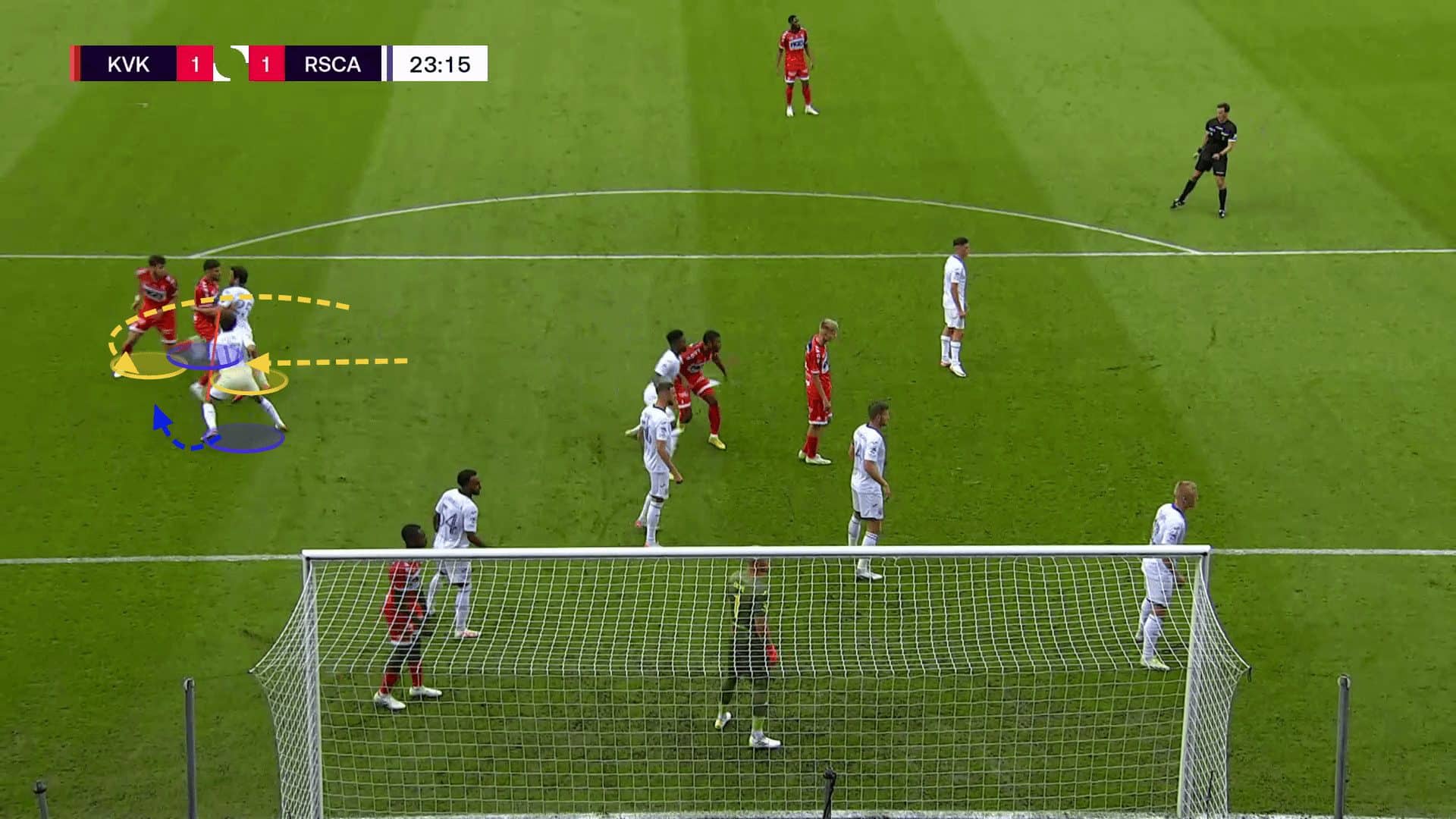
Where Opposition Teams Find Success
Although they have been extremely adept at defending corner kicks, there are some common themes to the moments when opponents managed to make the first contact.
Firstly, there has often been space at the far edge of the six-yard box.
As mentioned earlier, when a zonal defender vacated his spot to pick up a free player, the other defenders were instructed to step up to close the distances between them, as shown in the image below.
As the runs are made towards the near edge, dragging opponents towards the corner taker, a big space opens up at the far side for an attacker to arrive in an open area.
Their only task is to lose their marker from deep.
Even though this may not be a perfect shooting opportunity, this gives teams fairly easy access into the six-yard box, from where a header across goal or down to a teammate can cause chaos.
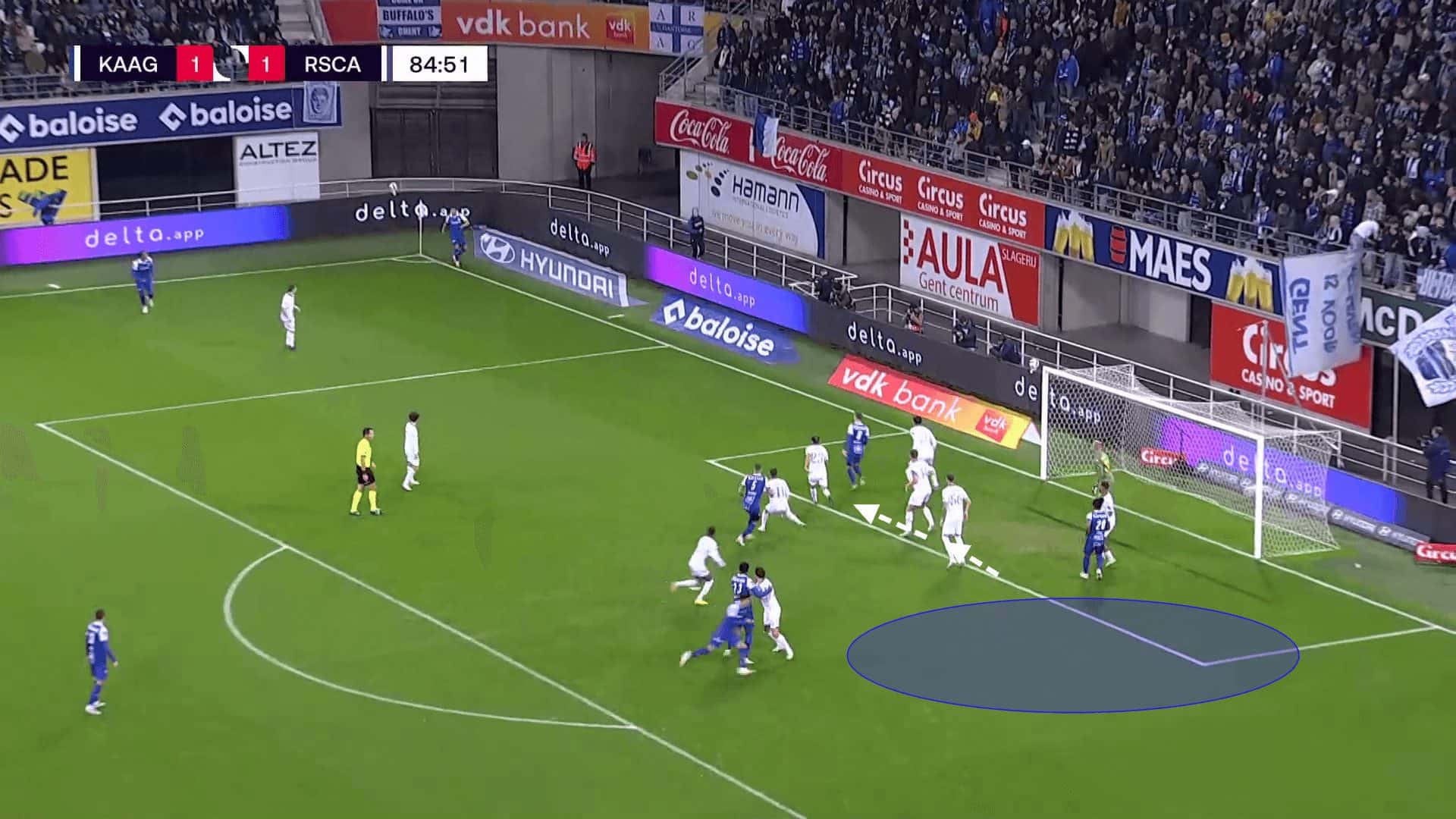
One other area in which teams have managed to find space is in deeper areas around the penalty spot.
As mentioned earlier, Anderlecht doesn’t mind being outnumbered deeper, as the header from deep is less likely to result in a goal.
However, similarly to the point above, teams don’t have to shoot following the first contact from a corner kick.
The image below shows the attacking side able to win the aerial duel in a deeper position as no defender is present to disrupt the attacking run; at the same time, there are runs made towards the back post, but the player heading the ball is unaware.
Following the first contact, zonal blocks are often in disarray when players naturally focus on the ball, and attackers can ghost into dangerous areas unmarked.
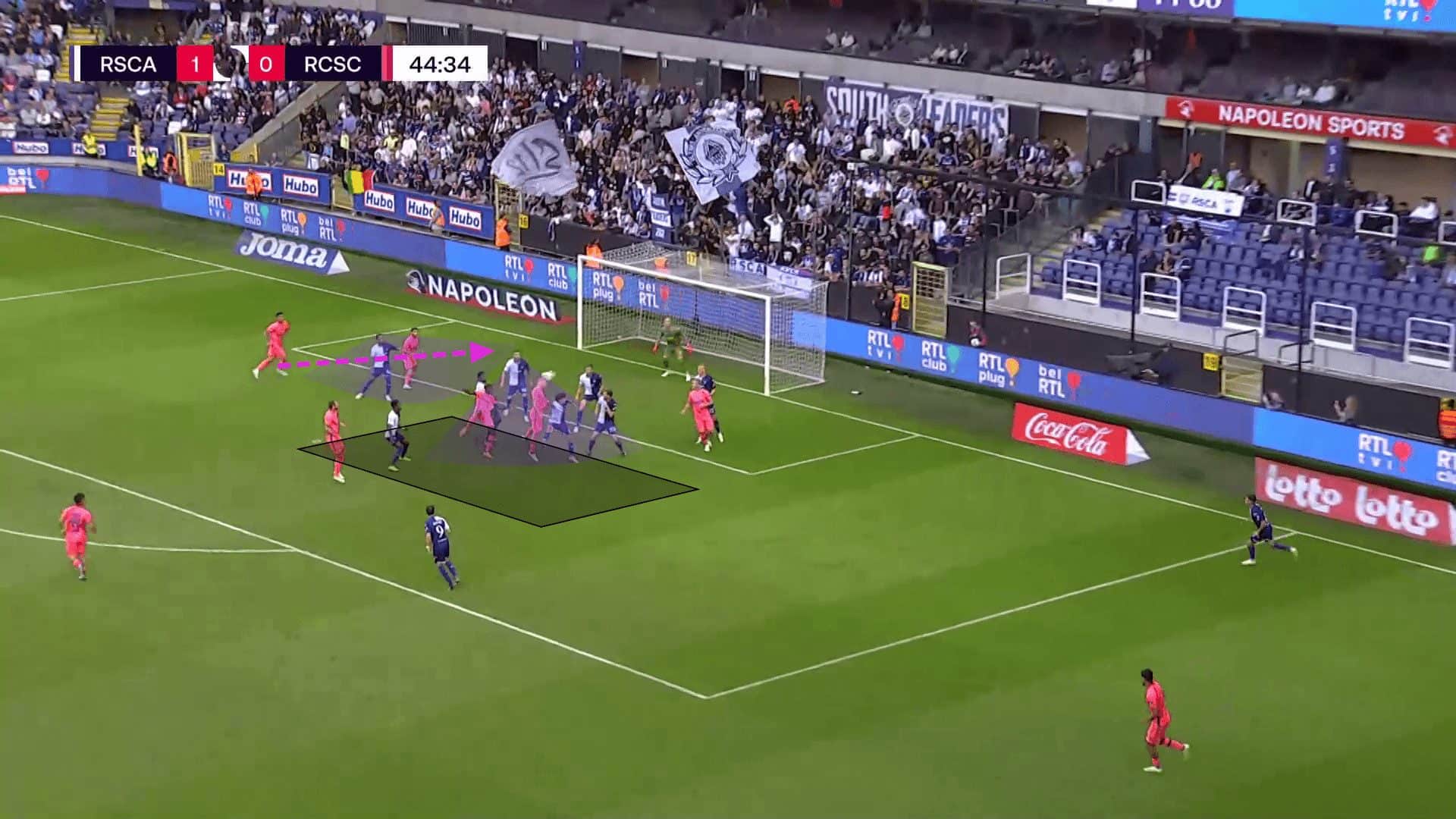
Summary
This set-piece analysis has highlighted why Anderlecht has yet to concede a goal from a corner this season.
Their tenacity in aggression from every defender, as well as the fluidity between each zonal defender, to always make sure the six-yard box is protected has meant that opponents find it difficult to find space in the penalty area.
Similarly, this tenacity is also used to close down short corners before they can be crossed in, with multiple defenders coming out to rush the opponents.
Ultimately, Anderlecht
forces 1v1 aerial duels in deep areas and doubles up around the six-yard line by making sure there is a defensive presence amongst the entire line anda man marker.
They use a slightly deeper start position to enable defenders to generate the same momentum as attackers, making the aerial duels fair for both sides.
They also back their own aerial prowess over that of the opposition.
In the 7% of opportunities where the opposition manages to win the aerial duels, they are likely being closely challenged by one of the eight deep Anderlecht defenders.
This means that on the rare occasion a team does win a header, it isn’t in a position to accurately place the ball in the goal.
However, the deep defensive starting positions of the entire unit mean that opposition teams will be able to find space in deeper areas around the penalty spot or at the back post.
If teams are patient enough to use flick-ons into secondary zones, they will be able to generate chances more often.
At the end of the day, Anderlecht are a highly reliable defensive set-piece side, but the opposition hasn’t regularly challenged or targeted the potential weak areas of this set-up.






Comments